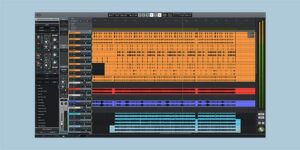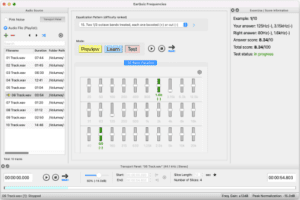The choice between Virtual Studio Technology (VST) and its successor, VST3, has become a crucial decision for musicians, producers, and audio engineers. Stemming from Steinberg’s commitment to innovation, these plugin architectures play a pivotal role in shaping the sonic landscapes of contemporary music. In this article, we embark on a comprehensive exploration of the evolution from VST to VST3, dissecting their key differences and unveiling the features that make each unique.
Background on VST
Evolution and History
Virtual Studio Technology, or VST, emerged in the late 1990s, transforming the way artists approached digital audio production. Steinberg’s creation allowed for the seamless integration of software instruments and effects into Digital Audio Workstations (DAWs), marking a paradigm shift in the music-making process.
Role of VST in DAWs
VST quickly became a cornerstone for digital music creators, offering a versatile platform for an extensive array of third-party plugins. From virtual instruments (VSTi) to audio effects (VSTfx), the technology became an indispensable component of DAW ecosystems, facilitating a rich and diverse palette of creative possibilities.
Introduction to VST3
Reasons for Development
As technology advanced and user demands evolved, Steinberg responded with VST3, the third iteration of the protocol. VST3 was conceived to address limitations present in its predecessor, providing a more sophisticated and feature-rich platform for developers and users alike.
Key Improvements and Features
VST3 brought forth a myriad of enhancements, revolutionizing the way plugins interact with DAWs. From graphical user interfaces to MIDI capabilities, the advancements in VST3 aimed to elevate the user experience and push the boundaries of what was achievable in digital audio production.
Key Differences Between VST and VST3
| Aspect | VST | VST3 |
|---|---|---|
| Plugin Architecture | Fixed-size interfaces for plugins. | Resizable and vector-based interfaces, providing greater flexibility in design. |
| Handling of MIDI and Audio Data | Basic MIDI capabilities with limitations in precision. | Advanced MIDI capabilities, enabling more precise control over parameters. |
| Audio Processing Precision | 32-bit processing precision. | 64-bit processing precision, leading to improved audio quality. |
| Resource Consumption | “Always on” nature, consuming CPU resources even when not actively in use. | Efficient resource management, consuming CPU resources only when the plugin is activated. |
| Multi-Bus Processing | Limited support for handling multiple audio streams simultaneously. | Supports multi-bus processing, allowing plugins to handle multiple audio streams with greater flexibility. |
| Scalability and GUI | Fixed-size graphical interfaces. | Resizable and vector-based interfaces, providing adaptability across different screen sizes and resolutions. |
| CPU Resource Usage | Constantly consumes CPU resources, regardless of whether the plugin is actively used. | Consumes CPU resources only when the plugin is in use, allowing for more efficient resource management. |
| Compatibility and Adoption | Widespread compatibility across various DAWs. | Increasing industry adoption with newer DAWs supporting VST3, coexisting with VST. |
| Range of Installed Plugins | Limited by constant CPU consumption, impacting the number of concurrently installed plugins. | Enables a broader range of installed plugins since CPU resources are only consumed when the plugins are activated. |
| Efficiency and Workflow | May require managing CPU usage to prevent performance issues with multiple plugins. | Offers a more efficient workflow, particularly in scenarios with numerous plugins, as CPU resources are allocated only when needed. |
Compatibility
While VST has a longstanding presence and is widely supported across various DAWs, VST3 is swiftly gaining ground. Its expanding compatibility ensures that users seeking the latest features can seamlessly integrate VST3 plugins into their preferred digital work environment.
GUI Capabilities
VST3 introduces a notable improvement in graphical user interface capabilities. Unlike the fixed-size interfaces of VST, VST3 offers resizable and vector-based interfaces, providing users with enhanced scalability and adaptability across different screen sizes and resolutions.
MIDI Capabilities
VST3 significantly improves MIDI capabilities, allowing for more precise control over parameters and fostering enhanced communication between plugins and DAWs. This facilitates a more expressive and nuanced musical experience for users, marking a substantial leap forward from the limitations present in VST.
Side-Chaining
VST3 standardizes side-chaining, offering a more accessible and consistent approach across different plugins. This addresses the varied and plugin-specific side-chaining implementations that users may encounter with VST, providing a more streamlined and efficient process.
Multi-Bus Processing
Acknowledging the complexity of modern audio production, VST3 supports multi-bus processing. This enables plugins to handle multiple audio streams simultaneously, offering greater flexibility in signal processing and contributing to a more versatile workflow.
Audio Processing Precision
VST3 introduces 64-bit processing precision, enhancing the accuracy of audio signal processing. This advancement results in improved audio quality, reducing quantization errors and providing a more faithful representation of the original sound compared to the 32-bit processing of VST.
Additional Considerations
Automation and Parameter Control
VST3 brings about enhanced automation features, allowing for more precise control over plugin parameters. Features like sample-accurate automation contribute to a more detailed and intricate audio production process.
State-of-the-Art Audio Bus System
The advanced audio bus system in VST3 supports configurations like multi-input and output buses. This paves the way for more complex routing options, catering to scenarios where intricate signal paths are required for sophisticated audio processing.
Efficiency and Resource Management
VST3 introduces improvements in resource management, potentially leading to more efficient plugin performance. With greater control over how plugins utilize system resources, users may experience better CPU usage and overall system stability.
Offline Processing Capabilities
VST3 supports offline processing, allowing certain tasks to be performed without real-time constraints. This feature is particularly beneficial for resource-intensive operations such as rendering or exporting projects, where real-time processing may not be necessary.
Integration with Modern Technologies
VST3 is designed to integrate seamlessly with modern technologies and standards. Its compatibility with touchscreens and high-resolution displays enhances the user experience, aligning with the evolving hardware and software trends in the music production industry.
Future-Proofing
As the music production industry continues to evolve, choosing VST3 may offer a sense of future-proofing. The protocol is aligned with emerging technologies and standards, ensuring compatibility with upcoming features and innovations in the dynamic realm of digital audio.
Conclusion
In the dynamic dichotomy of VST and VST3, the choice ultimately hinges on the specific needs and preferences of the user. While VST remains a reliable and widely supported format, VST3 introduces a plethora of features that can significantly enhance the capabilities of plugins and improve the overall music production workflow. As the industry marches forward, embracing VST3 may become more enticing for users seeking cutting-edge features and improved plugin performance. The key lies in experimenting with both formats and choosing the one that best aligns with individual creative needs and preferences, ensuring a harmonious fusion of technology and artistry in the world of digital audio production.



